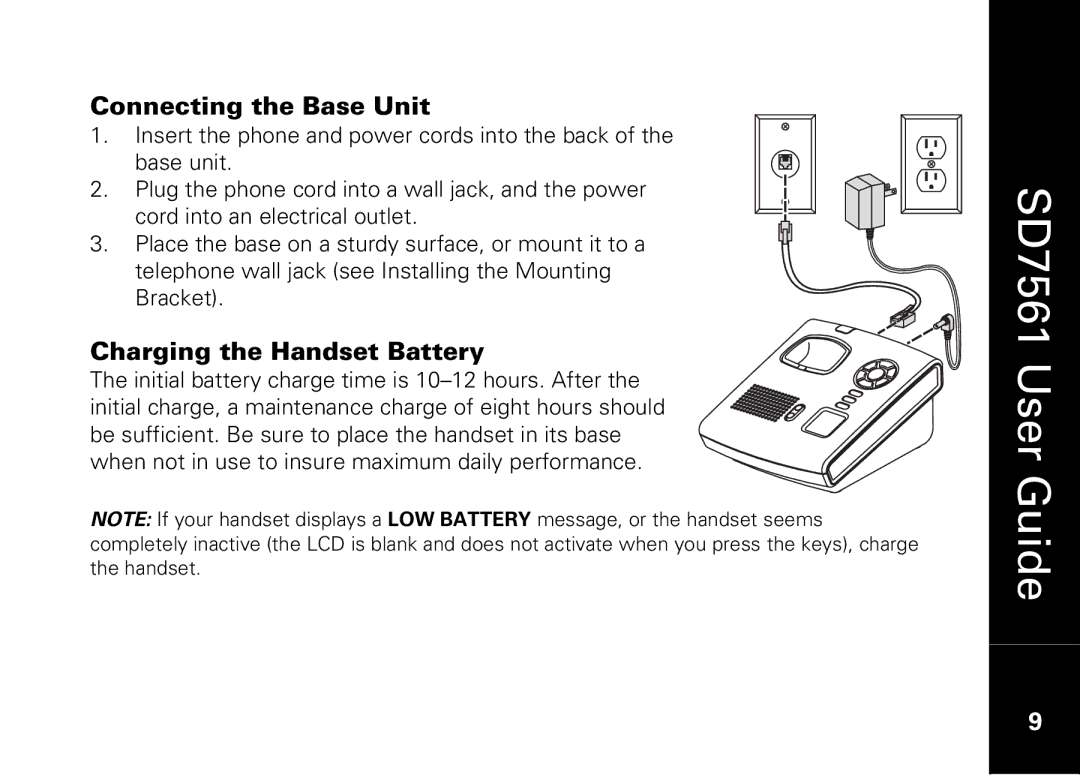SD7561 specifications
The Motorola SD7561 is a versatile digital signal processor (DSP) that stands out in the realm of telecommunications and media processing. Known for its high efficiency and exceptional performance, the SD7561 is designed for applications that require robust processing capabilities, such as voice over IP (VoIP), multimedia communication, and advanced audio processing.One of the primary features of the SD7561 is its multi-core architecture, which facilitates parallel processing. This capability allows the processor to handle multiple tasks simultaneously, providing enhanced throughput and reduced latency. Such efficiency is critical in applications where real-time communication is paramount, as it ensures smoother voice and video transmission without delays.
The SD7561 is built upon advanced semiconductor technology, enabling it to offer lower power consumption while maintaining high performance. This aspect is particularly beneficial for portable devices, where battery life is a crucial consideration. The chip's efficient design allows manufacturers to develop products that balance performance with energy efficiency, thereby improving overall user experience.
In terms of audio capabilities, the SD7561 is equipped with state-of-the-art audio processing features. It incorporates advanced algorithms for noise suppression, echo cancellation, and voice activity detection, ensuring crystal-clear audio quality even in challenging environments. This makes the SD7561 an ideal choice for applications such as conference phones and professional audio equipment, where sound clarity is of utmost importance.
The processor also supports a wide range of communication protocols, making it versatile for various networking applications. It can seamlessly integrate with existing infrastructures, supporting both wired and wireless communication standards. This compatibility ensures that the SD7561 can be easily implemented into a variety of devices, enhancing their functionality and performance.
Another notable characteristic of the Motorola SD7561 is its scalability. As communication technologies continue to evolve, the SD7561 is designed to adapt to new standards and requirements, making it a future-proof solution for manufacturers. The chip's flexibility means that it can be deployed in a wide array of applications, from simple consumer electronics to complex enterprise systems.
Overall, the Motorola SD7561 is a feature-rich digital signal processor that combines high performance with low power consumption. Its advanced audio processing capabilities, multi-core architecture, and support for various communication protocols make it a standout choice for manufacturers looking to enhance their products in an increasingly connected world.

